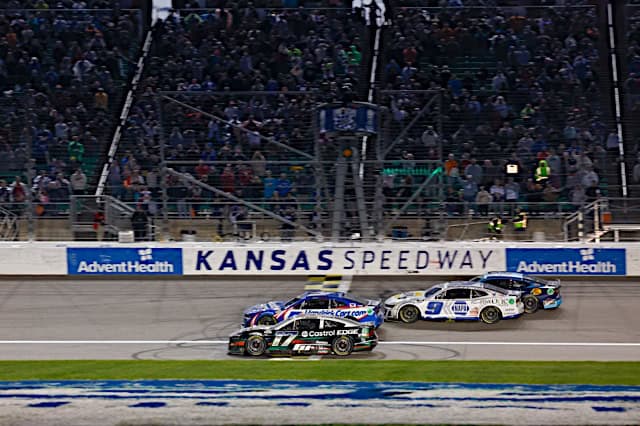What Happened?
An incredible, all-out, action-packed race at Kansas Speedway ended in a historic finish when Kyle Larson did his best Lightning McQueen impression to beat Chris Buescher to the finish line.
Chase Elliott and Martin Truex Jr. had their own battle as they closed on the lead duo, leaving Elliott in third and Truex in fourth.
With the victory, Larson bookended the Toyota stranglehold in the Heartland. Larson won in the fall of 2021 and snaps a four-race Toyota streak, beating a Ford to the finish. The insanely close ending set a new record for the closest ever NASCAR Cup Series finish.
What Really Happened?
From the drop of the green flag, the Cup Series race featured side-by-side racing at nearly every moment during the 268 laps.
Entering the weekend, Kansas Speedway had really high expectations. With all of the discourse surrounding the Next Gen and its flaws, the best and brightest track has consistently been Kansas. Once again, it delivered a starry sky’s worth of bright and shining moments.
The progressive banking of the 1.5-mile facility deserves the most thanks.
The race refused to follow a typical flow, and drivers dueled it out with amazing battles early on. Ross Chastain earned the lead early and fended off Christopher Bell until Larson entered the chat.
Larson took the lead, but instead of driving away, Chastain fought tooth and nail to hold onto the lead in one of the longest battles you will ever see, thanks in part to aggression of the drivers and to the progressive banking.
Though the top line has become dominant, it has yet to reach the levels of the Homestead-Miami Speedway high line. Instead, drivers can still run a variety of lines while racing the higher banking, generating differing levels of momentum.
As Chastain and Larson battled, they could throw their car into the corners, starting low and drifting high, allowing the steeper banking at the top of the corner to help catch the car. Meanwhile, the opposite driver had the option to lift off the throttle ever so slightly and angle down the track, taking a straighter line off the corner that wasn’t affected by the lesser banking.
This incredible phenomenon showcased itself time and time again throughout the field as…
Click Here to Read the Full Original Article at …

